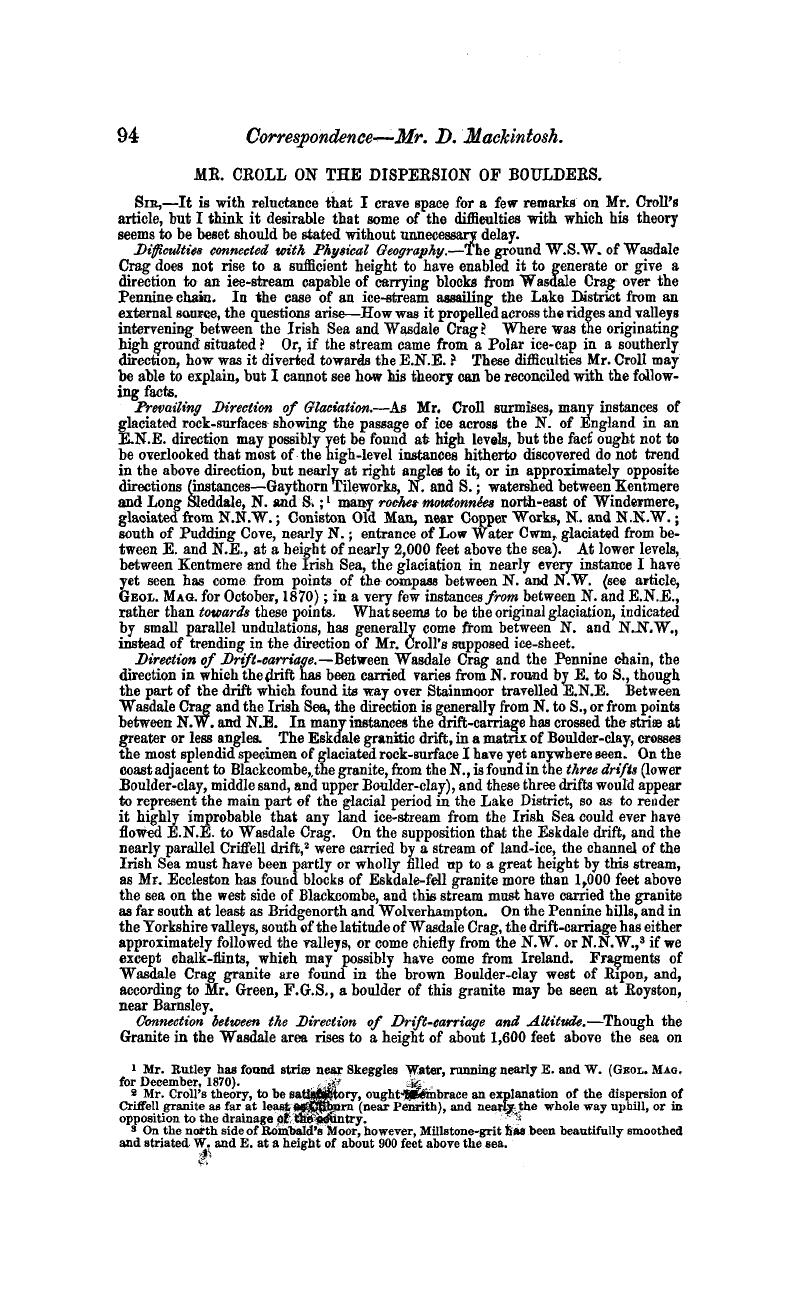Article contents
Mr. Croll on the Dispersion of Boulders
Published online by Cambridge University Press: 01 May 2009
Abstract

- Type
- Correspondence
- Information
- Copyright
- Copyright © Cambridge University Press 1871
References
page 95 note 1 Mr. Rutley has found striæ near Skeggles Water, running nearly E. and W. (Geol. Mao. for December, 1870).
page 94 note 2 Mr. Croll's theory, to be satisfactory, ought-seem brace an explanation of the dispersion of Criffell granite as far at least as cliburn (near Penrith), and nearly the whole way uphill, or in opposition to the drainage of the country.
page 94 note 3 On the north side of Rombald's Moor, however, Millstone-grit has been beautifully smoothed and striated W. and E. at a height of about 900 feet above the sea.
page 95 note 1 The land-ice theory is rendered still more improbable by the facts, that Wasdale Crag granite has found its way as far as the mouth of the Humber; that from a narrow neck on Stainmoor it has expanded over an area forty miles in breadth (from Ripon and York to the sea-coast); and that Liassic drift from the N. Yorkshire hills (over which the granite must have passed) has been dispersed over the plain of York. Gryphtxa incwva have been found in Boulder-clay as far west as Keighley.
page 95 note 2 Blocks of Permian breccia have been moved up a neighbouring slope to a vertical extent of 1,000 feet, and this, I think, can be sufficiently explained bythe progressively upward movement of coast-ice during a subsidence of the land.
- 2
- Cited by




